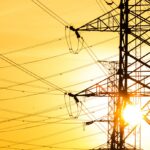
AI, ML, and IoT technologies are already implemented in energy and utility companies (E & E&U) worldwide. For example, AI technologies are used to forecast electricity loads, minimize the time of video surveillance work, and make drones safe. IoT is widely employed in smart metering systems to aggregate data from different sources. In this article, we will dig into AI, ML, and IoT technologies in E&U companies.
AI’s Primary Tasks in Energy and Utility Companies
Artificial intelligence (AI) is the science of making machines reason like human brain and complete human tasks, such as natural language processing, machine learning, expert systems, chatbots, and virtual assistants, and recommendation systems. AI transforms the production, transmission, and consumption of electricity; it is relevant for solving predictive problems in the repair and maintenance of equipment.
Artificial intelligence capabilities encompass various tasks listed below.
- Understanding text/speech-based information to analyze both structured and unstructured data sources
- Machine learning paradigm – training a model using the training set examples
- Performing inference on new data independently from its source by applying the trained model
- Adapting to changes in business process or application state.
Natural language processing is an important task in AI applications of energy and utility companies, as it allows analysis of textual data, and processing of large volumes of text quickly. Another mandatory task for real-world use cases is image recognition. E&U companies can use new technology to reduce the cost of video surveillance work using drones with the help of image recognition systems based on neural networks.
IoT applications in Energy and Utility Companies
IoT technology is designed to collect data from objects (e.g., meters, power distribution units, sensors) using various communication technologies. For example, smart metering systems aggregate data from telemetry meters read at the electricity grid points of delivery and other sources.
Different AI technologies can analyse the data—structure recognition algorithms or machine learning models provide insights into the consumer behaviour patterns for an energy company’s customers. In addition, one can study how much time it takes individual consumers to start appliances after turning them on as soon as they receive a signal from the smart meter that allows them to analyse whether this process takes place quickly or not.
For example, image recognition algorithms are used to analyse the images of electricity meters captured by video surveillance equipment installed in front of a building. New technology may reduce the time required for inspection work using drones with the help of image recognition systems based on neural networks.
Multi-Layer AI Platforms Applied in Energy and Utility Companies
AI at energy and utility companies operates on multiple levels. At their core, they rely on an underlying ML technologies stack composed of tools that allow solving problems in different areas related to all aspects of energy generation, transmission, usage, storage, and consumption.
Data science techniques are applied throughout the problem solving, so specific statistical knowledge is needed. The processes include natural language processing, machine learning paradigms, training models using training set examples, performing inference on new data independently from its source by applying the trained model, and adapting to changes in business process or application state.
ML Technologies Stack Applied in Energy and Utility Companies

The Machine Learning Technologies stack consists of tools required to solve problems in different areas related to all aspects of energy generation, transmission, usage, storage, and consumption, including the following components:
- Natural language processing: an important task in AI applications of energy and utility companies, as it allows to analyse textual data, process large volumes of text quickly
- Structure recognition algorithms: image recognition
- Machine learning paradigms training models using training set examples
- Performing inference on new data independently from its source by applying the trained model
- Adapting to changes in business process or application state.
ML technologies can be applied for advanced predictive analytics for infrastructure decision-making to improve maintenance strategies in power grids. ML capabilities encompass various tasks listed below:
- Understanding text/speech-based information to analyse both structured and unstructured data sources
- Training a model using training set examples (e.g., known examples of equipment status)
- Performing inference on new data (e.g., unknown/unseen examples in the future) using the trained model
- Adapting to changes in business process or application state (i.e., monitor and update previously learned models when execution context changes).
Final Thoughts on Impact of Advanced AI, ML and IoT Technologies on Energy and Utility Companies
While AI, ML, IoT technologies may not be really applicable to tasks like essay writing service which require much human involvement, they’re beneficial for E&U companies by improving their performance and increasing productivity. Also, it enables them to build a scalable solution that can respond quickly to changing conditions of the work environment. With the help of AI technologies used in energy and utility companies, one can track different processes, implement predictive maintenance efficiently, ensure proper operation of various equipment within smart grids, etc. It may have a massive impact on business profitability as AI technologies can improve collected data’s reliability and usability to generate better and more reliable energy production and distribution processes.
A simple example of an ML algorithm may be a decision tree, a flowchart-like structure with nodes that split the data into subsets by testing the values of different variables. A simple decision tree would have two branches stemming from a single node: one branch representing “hot,” another “cold.” For each leaf of such a tree, there is an outcome (a diagnosis) represented as a letter (in this case, “H” for hot or “C” for cold). This particular tree predicts whether appliances are likely to need servicing after the first ten operating hours.
IoT is used to improve the reliability and usability of data collected from sources. For example, IoT can improve the reliability and usability of collected data from sources to generate better and more reliable energy production and distribution processes.
IoT enables the collection of vast amounts of data in real-time, for example, by detecting deviations in power consumption that could indicate faulty equipment or inefficient practices. The individual components are deployed at different physical locations (e.g., wind turbines). Since autonomous systems cannot be controlled directly because they are too distant, engineers must rely on a control system that uses information from multiple sensors. This means deploying IoT solutions will enable companies to collect large volumes of machine-generated data, including those coming from hundreds or thousands of smart meters and those from numerous smart devices. This data can address several business challenges such as reducing operating costs, improving service responsiveness, and more precise customer service.
Author Bio:

Charles Normandin is a freelance writer from Goodlett, Texas. He enjoys visiting exhibitions, meeting new people, and discussing new ways to express himself through art. Check out his tweets at Charles60104524 on Twitter.
Discover more from TechBooky
Subscribe to get the latest posts sent to your email.







